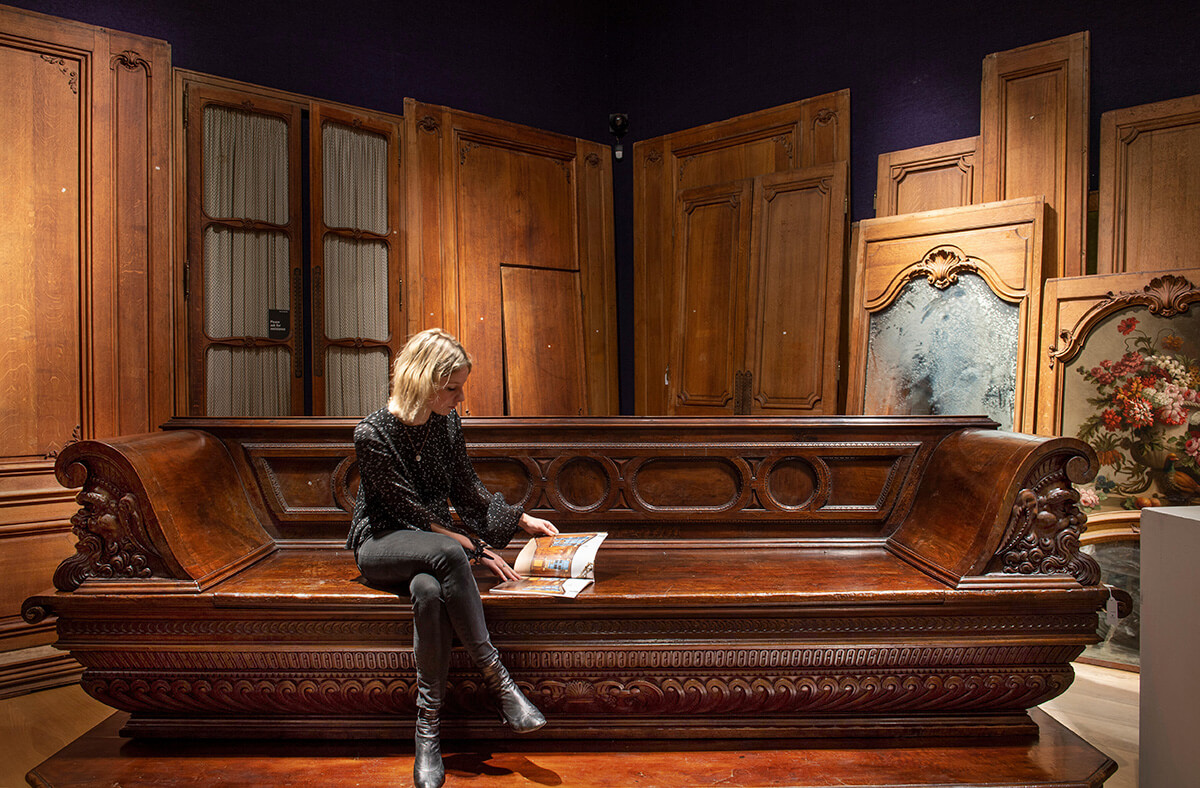A peculiar furniture of the Italian noble palaces
Carved walnut Cassapanca was highly prized to adorn Florentine palaces.
This Cassapanca is striking for its proportions, elegance and for the two exceptional Mascheroni masterfully carved which capture the gaze of those who admire them. The imposing dimensions give this piece of furniture an out of the ordinary charm.
The seat is realised by a single, large walnut wood table, which conceals a large space. Along the lower edge of the seat, we find a band with Carthusian inlay. In the lower part there is a decoration with symmetrical volutes and on the central part is a carved frieze with two small opposing masks.
The Cassapanca rests on a plinth base with an inlay frame. The backrest and the Mascheroni are associated and can be separated from the lower Cassapanca.
A Cassapanca used for seating and stuff storage
This forniture did double service, used for seating and stuff storage.
Its Italian name, Cassapanca (box and sitting). As in our case, extensive size examples are extremely rare to find due to house sizes decreasing over the centuries. The Cassapanca is one of the oldest – if not the most ancient – pieces that make up the furnishings of a home. The first examples were dated around the year 1100, in the middle of the Middle Ages. However, it was at the time of the Renaissance that this furniture began to be called Cassapanca.
Comparison
- A similar Tuscany Cassapanca, in the armrests and Mascheroni, is part of the Wawel Royal Castle collection, which became later one of the most important national museums in Poland. The core of the collection is the furniture of the sixteenth and seventeenth centuries.
- The lower part of our Cassapanca is similar in shape to the Cassapanca mid-16th century at the Metropolitan Museum of Art – New York.














